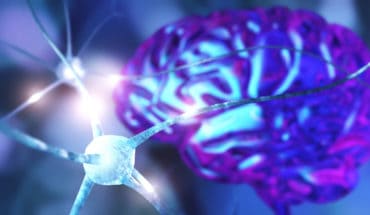How sound alters sense of touch: New research suggests our brains process different sensory inputs more like a symphony, combining and harmonising information rather than processing separately.
Processing information from our senses is crucial to survival. Seeing a red light tells you to stop at an intersection, while the sound of a pedestrian button informs you that it’s safe to cross the road.
Of course, the interactions we have with the world are rarely through a single sense, and our ability to combine different sensory signals is extremely useful.
For example, we make roads safer to drive on by installing small bumps along lane markers (called audio tactile lines) so that when you drive on them the combination of vibration and sound helps to immediately warn you that you are drifting dangerously out of your lane.
We don’t know a lot about how our brains combine information from different senses though we do know that there are discrete primary processing sites in the brain for each sense.
But our latest research suggests that these processing sites aren’t as specialised as we may have thought and instead take in and process information from other senses as well.
It means that in processing sensory information our brains may work less like a computer and more like an orchestra harmonising different signals.
Now published in Nature Communications, our research investigated how information from different senses interact with each other and where in the brain this occurs.
Specifically, we looked at how sound can alter how the sense of touch and how that is processed in the brain.
To study sensory processing we measured the activity of neurons in mice brains by marking the neurons with a harmless fluorescent protein that lights up when they activate.
Combined with a special two photon microscope, it gives us a ‘window’ over the brain through which we can ‘see’ neurons in action and monitor their responses to sound and touch.
We looked inside the primary somatosensory cortex – the part of the brain that is activated by touch. Here, we found that sound enhances the processing of the sense of touch.
When sound and touch were presented together, neurons in the somatosensory cortex increased their activity. This led to faster behavioural responses when we tested the ability of the mice to detect a vibration.
In other words, having more information from multiple senses can improve the response time to sensory signals.
Think, for example, at how vibration and sounds on your phone help you realise that you have received a new notification or a phone call. How many times have you missed a call because your phone was muted, even if on vibration?
The finding suggests that primary sensory areas can also integrate information from multiple senses.
We found that this integration was possible thanks to connections between the somatosensory cortex and the part of the brain that processes sound – the auditory cortex.
These connections provide information about sound to a specific portion of the neuron called dendrites, leading to an increase in their activity. Dendrites, which are a neuron’s ‘antenna’ as they receive and integrate thousands of sensory signals, play an important role in integrating sound and touch information.
Indeed, when we ‘silenced’ auditory information to the dendrites by blocking the activity of projections from the auditory cortex using optogenetics – a harmless technique in which light is used to manipulate neuron activity – mice became slower at detecting vibrating stimuli.
This shows that the benefit of integrating sound and touch can occur thanks to communications between parts of the brain that are allocated to different sensory modalities.
This challenges the notion that the brain works as modules – processing discrete sensory information, in parallel but separately from each other. Instead, these cortical regions work together to create the complex patterns of brain activity that allow us to perceive (and respond to) the world.
Better understanding how this works could potentially tell us more about conditions like schizophrenia, autism and anxiety – all which are marked by impaired sensory processing.
But for now, the next time you drive over lane markings or catch a phone call, you can thank the unique neuron symphony going on in your head.
This article was written by Dr Luca Godenzini and Associate Professor Lucy Palmer, Florey Institute of Neuroscience and Mental Health.
Originally published in Pursuit.
- Iron and the aging brain - 4th January 2022
- How sound alters sense of touch - 28th October 2021
- Our ‘second brain’, the gut as an important link between brain and body - 12th October 2021







